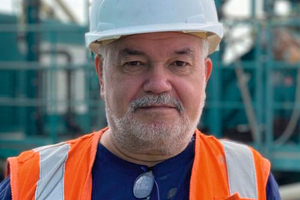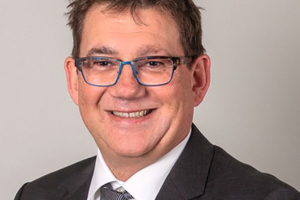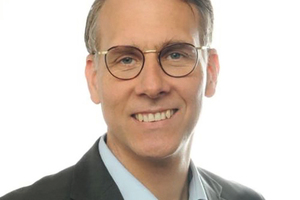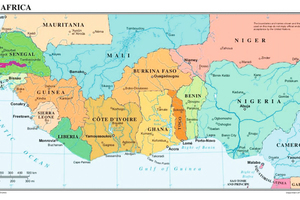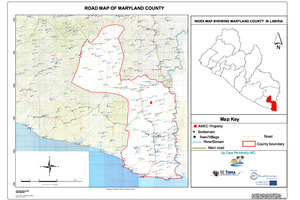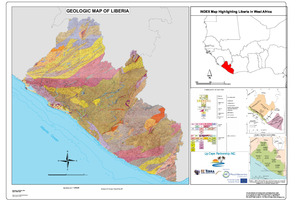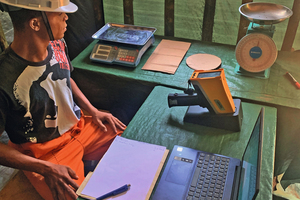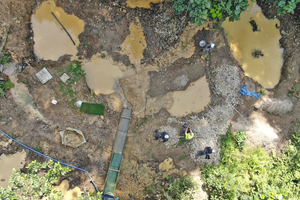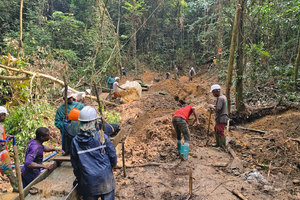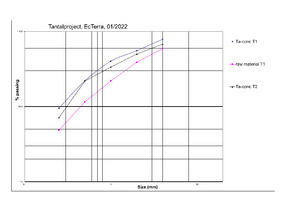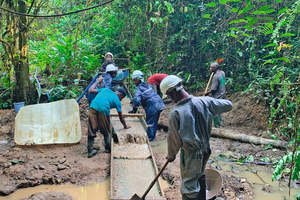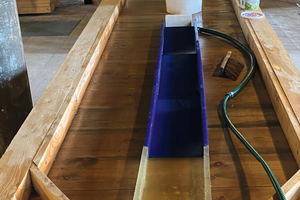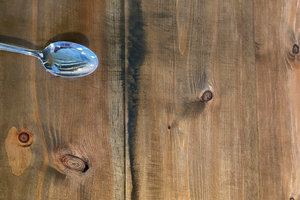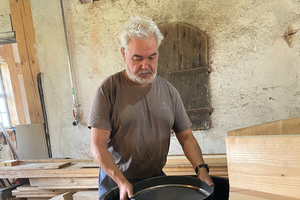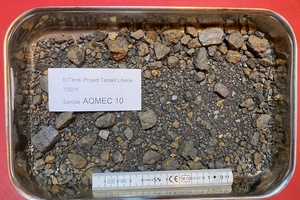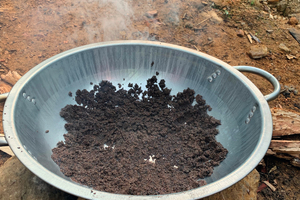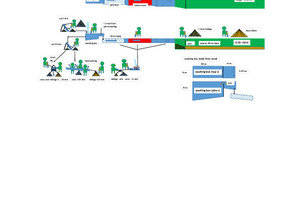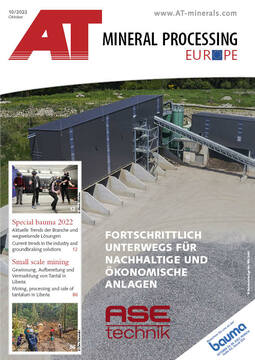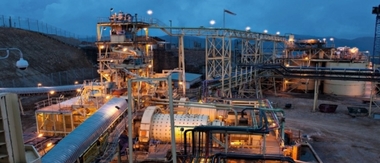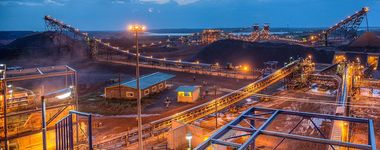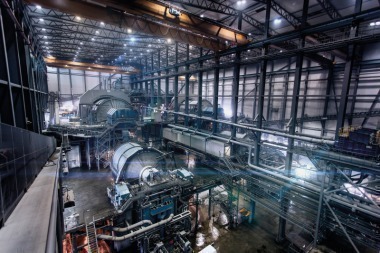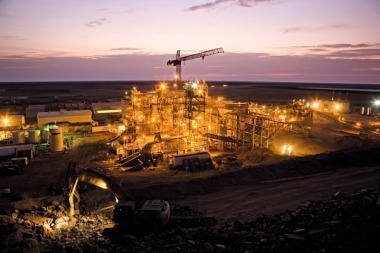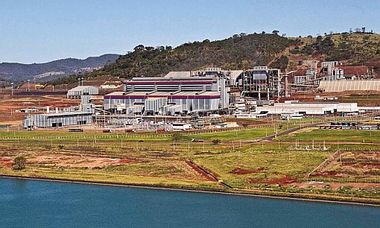Mining, processing and sale of tantalum in Liberia
Large quantities of the tantalum extracted worldwide come from small-scale mining enterprises – sometimes from illegal mining with devastating consequences for humans and nature in the world’s poorest countries. With reference to a fairtrade project for the mining, processing and sale of tantalum in Liberia, this report shows how fairtrade mining can work.
1 Introduction
Liberia is a relatively small state on the West African coast with a size of 111 369 km², that is, covering roughly the same area as the German states of Bavaria and Baden-Württemberg together. The population totals around 5.058 million inhabitants (as of 2020), which makes Liberia one of the countries with the lowest population density in West Africa. Liberia today is still marked by the major impact of the two civil wars (1989 – 1997 and 1999 – 2003) and the Ebola pandemic in 2014 – 2015. The country is still recovering from these events. This is noticeable, for example, from the poor infrastructure.
Liberia was one of the first independent states on the African continent, which enabled European countries, e.g. Sweden and Germany, to search for resources – especially mineral resources – and set up mining operations there. Prominent examples of this are the Liberian-American-Swedish Mining Company (LAMCO) (from Sweden and America) and the German-Italian mining company Bong Mining Company, BMC, which have been mining iron ore since the 1950s. Mining was, however, stopped with the outbreak of civil war in 1989. After 2004, primarily the iron ores attracted international interest, and companies like, for example, Arcelor Mittal began mining these ores. Besides iron ore, there is interest in gold and diamond mining. Moreover, focus is also shifting to other mineral resources, e.g. tantalum.
Most geological data come from the 1960s and 1970s. Only in recent years – after the civil war – have exploration and mining activities resumed, and more recent data on Liberia’s enormous mineral resources have been published. Besides the typical gold deposits, numerous iron ore reserves are known. One of the largest deposits in the Nimba Mountains is now back in production following the war and operated by Arcelor Mittal. The old Bong Mine has been almost exhausted, but is operated by China Union. The Putu region in the southeast of the country in Grand Gedeh County has been fully explored and is basically ready to go into the development phase. Other Fe deposits are still being assessed. In recent years, there has been a certain diamond rush as an Israeli company publicly announced that the largest kimberlite pipes in Africa are believed to be in Liberia. New data are set to prove this.
Small-scale or artisanal mining is very important especially for gold and diamonds as it is often the only work opportunity for the local population. The mined gold is then usually bought up illegally, secretly taken out of the country and smuggled to Asia for further processing.
The climate in Liberia is tropical, that is often hot and humid over the entire year, which essentially consists of two seasons: a rainy season from April/May to October and a dry season from November to March. The heavy West African monsoon has a severe impact on local life and infrastructure. Since the civil war, Liberia has tried to improve its dilapidated road network. Only around 40 % of the country’s main roads are asphalted. Otherwise, laterite roads are common, but these tend to break apart during the rainy season. The logistics and transport of relatively large goods, e.g. in containers, is therefore only practically possible in the dry season and has to be planned well in advance.
2 UCP-ECT mining project
Tantalum is used mainly in electrical engineering/electronics for the production of microcapacitors. It is also used particularly everywhere where components and alloys should not react with the environment, for instance special alloys for turbines as well as medical implants. On account of their high specific weight, most tantalum minerals are very suitable for gravimetric concentration.
Tantalum is recovered from pegmatites and their erosion products (sands and gravels) in Maryland. The exploration and mining licences for tantalum interesting for UCP-ECT are found in the district of Maryland, directly on the border to Côte d’Ivoire. The distance to the capital of Monrovia is around 750 km. This location makes it attractive for illegal traders, as they can conveniently cross the green border to Côte d’Ivoire and illegally export Ta2O5 concentrate.
The mining licence referred to in this report lies around 50 km north of Harper (a town on the coast) and around 20 km away from the next large town of Pleebo. From Harper via Pleebo, the licence area can be accessed initially via a tarred road and then via a laterite road. The licence was originally acquired by the company AEMIC and has now been transferred to Up Cape Partnership Inc. It is a “Class B” licence that permits artisanal mining without large-scale equipment.
2.1 Company set-up
Although the project team is trying to keep all the structures simple, uncomplicated and transparent, a total of three companies are involved. The laws and funding procedures in Liberia and Europe do not permit a simpler model.
2.1.1 Up Cape Partnership Inc. (UCP) – Liberia
Partners are: ECTerra (Aus) Pty Ltd, Winston Tubman and Alyoscha Niedinger
Registered in the year 2020
UCP is exclusively responsible for all activities and projects in Liberia and will also be in charge of the shipping and sale of Ta2O5 concentrate to the EU market. UCP is seeking sole control and ownership of the mining licences.
2.1.2 ECTerra (Aus) Pty Ltd. – Australia
Partners are: Christian Masurenko, Einar Rossmann and Mohamed Hamza
Registered in the year 2008
ECTerra (Aus) Pty Ltd is financing the Liberian project and is also supplying technical and financial expertise.
2.1.3 ECTerra GEO Consulting GBR – Germany
Partners are: Christian Masurenko and Einar Rossmann
Registered in the year 2021
ECTerra Geo Consulting GBR was established for the purpose of project management of the Fair Tantalum project. ECT will manage all external consultants and supply the technical know-how for mining and shipping. ECT has been funded by EIT RawMaterials for project and general management.
2.1.4 Other partners
The concept of “responsible artisanal mining” calls for input from a range of experts and certainly requires sustained support. The project gets this support from other partners, which have been involved from the very beginning.
EIT RawMaterials is funding the project from the Booster Call 2021 and supports it with its network and know-how. Minespider, a young start-up, which is also funded by EIT, is helping the project with the “blockchain in mining” model, as a result of which a high degree of transparency is created in respect of the supply chains. Data are digitalized and in some cases made available publicly. Bruder Consult contributes information and ideas on processing he raw materials to make the work easier and safer, to enable a gradual increase in production and to improve quality monitoring. And, not least, the village communities Nyrwoken and Manolu, which are involved directly in the project, are supporting it with labour and ideas for the social development of the villages.
2.2. Project start
2.2.1 Set-up in the field
The field camp can be reached via a 20-minute walk on a beaten track through the dense rainforest. It comprises a field kitchen in which three cooks cook food on traditional hearths for up to 60 people each day. In the small field laboratory, representative samples of each day’s production are checked with the help of a mobile X-ray unit (Olympus Vanta). Here, the quality of the Ta2O5 is assessed. A local technician has been trained to operate this unit and conducts the analyses (Fig. 5). At a later date, a laboratory crusher and ball mill are to be added for improved sample preparation. In addition, there is a changing hut for the workers and small storage rooms for equipment and materials. All work areas of the small company are covered by selected experts in these fields.
2.2.2 Processing
On account of the limited financial resources and the level of training of the available labour, to begin with only mining and processing can be implemented that uses the most rudimentary tools and equipment. Useful in respect of the simple methods implemented are the high specific weight and the almost 100 % liberation of the tantalite, even with coarser grain sizes.
In the plans for concentration of the tantalite, the following general conditions had to be taken into consideration:
Mining and processing take place in a tropical area with almost non-existent infrastructure
Power is supplied by a diesel generator unit as electric energy is not available
Water is supplied from a stream by means of a diesel-operated pump
Equipment must be designed to be transportable so as to follow the mining operations
To begin with, the most rudimentary equipment, preferably DIY-built on site, is to be used
Labour with no or little training
Tests on processing and ongoing production had to start at the same time so that the project can be financially safeguarded for the future with revenue from fast first deliveries of concentrate
Inclusion of the surrounding population in the project
Complicated bureaucratic situation in Liberia
The raw material can be extracted close to the surface from river sediment and is then broken up by means of a water hose in a halved barrel. The broken up raw material is then fed direct onto a 10-m-long sluice that is lined with Miners Moss. Fig. 6 and Fig. 7 show this simple installation. Miners Moss is a looped synthetic matting, which is often used for recovering gold in artisanal mining. Very coarse particles are removed manually in an upstream process step.
This simple technology used to begin with has to live with the compromise that the grain size range processed in the sluice is very wide and adversely influences the yield. Table 1 shows the raw material distribution encountered in current tests on site and two typical particle size distributions of the concentrates (Fig. 8). It can be clearly seen that the sediments have been largely deslimed by the river current. The particle size distribution of the concentrates runs almost parallel to the raw material curve, but is finer, which is down to the high specific weight of the tantalite.
Simple sluices (Fig. 10) are used in artisanal mining especially for gold processing, often for preconcentration. As tantalite has a density, depending on mineralization, between 6.6 and 8.0 g/cm³ and is therefore much lighter than gold, the sluices have to be designed differently and must also operate differently.
With a ribbed PU sluice and on a historical nicking buddle (Fig. 9 and Fig. 10), tentative tests were conducted on small samples, with different quantities of water and inclination angles. These show that smooth sluices made of wood can concentrate the tantalite effectively up to particle sizes of around 45 µm (Fig. 11), however, coarser, and especially round, particles tend to roll and therefore to outsize. In the mean particle size range up to around 0.5 … 1.0 mm particle size, ribbed sluices are more suitable.
For grain sizes > 2.0 mm, jigs are better suited than sluices and static buddles. In manual jigging tubs, round screens are rhythmically moved up and down under water (Fig. 12). Fine grains < 2 … 3 mm fall through the screen and can later be fed onto the sluices. The heavy tantalite settles on the screen bottom and can be emptied in cycles.
The sluices are operated with a lower specific quantity of water per kg feed than in gold mining. Here, experience, which the workers will gain over time, plays a key role. Generally, one can say that for the same raw material feed rate, the sluice boxes are wider and operated at a flatter pitch as well as with a specifically lower quantity of water compared to in gold mining. Depending on the content of heavy mineral, the Miners Moss matting must be washed from time to time in a separate tub. The preconcentrate produced during washing can then be enriched to the final concentrate in a pan.
The concentrate produced in this way from the current very rudimentary sluice structure is washed clean and of high quality. Fig. 13 shows a typical concentrate after final concentration in a pan. The coarser grains are removed by hand in an upstream process and then added back again later. The concentrates from the sluice and downstream concentration in a pan are dried in an unorthodox way over open fire on site (Fig. 14).
As described above, the currently operated sluices still lose too many fine tantalite particles, which could be detected in the sluice tailings. The figures and particle size distributions show that the current system cannot reliably recover fine tantalite particles. From the experience so far based on tests and on site, and taking the above-mentioned general conditions into account, a concept has therefore been developed for simple but effective processing of the raw material.
The washing unit (Fig. 15) is to be adapted in line with the characteristics of the raw material with a special sluice. First the pit-moist raw material will be pre-screened on a pitched static screen, the coarsest particles having been previously removed by hand. This screening will, however, be inadequate or even impossible if the feed contains a higher quantity of wet fines. The screening is therefore intended to reduce the quantity that goes to the washing box at the start of the sluice. Direct integration of the prescreening in the sluice is planned. The screen undersize around < 2 mm can bypass the wash box and be fed direct to the sluice. Sufficient water is fed into the washing box, so that with agitation, the grain sizes around < 2 mm overflow onto the washing sluice. The coarser sediment is screened off at 25 mm. The size fraction around 2 …25 mm is jigged by hand. The material > 25 mm lands on the sorting table for manual sorting.
The actual sluice consists of three sections of different width. The bottom of the sections is lined with different media adapted to the particle size, which retain any high-density material. Once these media are loaded with sufficient heavy minerals, they are washed out and the preconcentrate sorted to final concentrate on a pan. After the three sections of the sluice, the tailings land in a settling ditch at the beginning of which is a collector box for the coarse particles. The overflow from this box sediments in the downstream settling ditch. Later tests will show whether the fine material from this ditch is suitable, for example, for use in the production of clay bricks.
The concentrates are dried, analysed and packaged for transport. The capacity of the plant is limited by the extraction rate achievable by the miners with the most rudimentary equipment. Based on experience with the current mining and processing operations, the next phase is to be more mechanized and planned to handle higher throughput rates
2.2.3 Quality control and transparency of the supply chain
Quality control is performed daily after extraction in a small field laboratory. With the help of a mobile X-ray unit (XRF Olympus Vanta), dried representative samples from daily production are tested for 30 elements, including tantalum oxide (Ta2O5) and niobium oxide (Nb2O5). This makes it possible to steer mining and determine the right mining areas. The chief geologist in the field immediately gets feedback based on the test results and can move the production site if the content turns out to be too low.
Every daily production is sealed with a lead seal, is assigned a unique identification number and stored in a database. At the same time, special software from Minespider is used to create a “shipping certificate” by means of “blockchain in mining” so that these data on daily production are encrypted such that every attempt to forge or change the data can be traced. This guarantees a transparent supply chain. The field laboratory on site ensures the data on quality are instantly processed and saved daily. Every daily production batch is labelled with data on the mining site (GPS), the mining group, Ta2O5 and Nb2O5 content and various other data. Accordingly, every production batch can be traced.
When production of a total of 500 kg Ta2O5 is reached, the material is stored in a 200-l metal barrel. The barrel is then sealed with a lead seal. By air (later by ship), production is sent to Germany and handed over to the buyer. In the course of the next months, the plan is to introduce an internationally recognized certification programme to guarantee a test-based and accepted certification of the Ta2O5. That means additional appraisals by independent experts and guarantees regular monitoring of the production processes.
3 Business development with reference to mineral processing
In February 2022, for the first time, 450 kg high-quality Ta2O5 concentrate with a content of 45 % Ta2O5 was shipped to Germany to a Ta producer. This consignment was accompanied by protocols and papers by means of “blockchain in mining” technology, the transparent data can be read freely with a QR code.
Over the next few months, production is to be increased to around 500 kg per month. This is to take place based on various models. First, the internal processes of production are to be improved and the work of the washers better organized. As a result, less time is to be lost thanks to the rebuild of the washing equipment. In the next step, more washers are to be recruited and more washing units set up in various areas of the licence. As a result, initially 500 kg per month and later up to 800 – 1000 kg Ta2O5 concentrate can probably be produced per month.
Moreover, talks have already been started with other licence holders to transform currently illegal projects into legal projects and integrate these into the “responsible mining” concept. The goal is to reach a joint output of 2000 – 5000 kg per month. The project team has already negotiated with a previously illegal trader and agreed that with the help of the project management, the previously illegal activities will be transformed into legal, tested activities, so that tantalum-concentrate can be bought in from various regions. In further steps, these regions are to be transformed with the project concept for responsible artisanal mining.
Difficulties and challenges
On account of insufficient capacity, the government is currently overstretched when comes to intensively stewarding positive projects like that described in this report. The expectations of the village communities involved are generally very high, however, they often lack understanding of the national mining laws. Passing on this information is essentially a job for the local mining inspectors.
Since the project start, competition from illegal, non-licensed competitors and traders has been enormous. Moreover, production often suffers because of a lack of local labour and commensurately low production rates. The reliability of sub-contractors presents a huge challenge as cooperative projects for the villages often suffer as a result. The fact that the world market for tantalum does not foresee premium payment for legal and fair tantalum is another problem. Equally challenging is the lack of infrastructure and the remoteness of the mining site, as Maryland cannot be accessed by road during the rainy season.
The original, high standards of UCP, to realize fair and responsible, legal small-scale mining of tantalum in a short time have not been implemented successfully. UCP had to rethink the situation and adapt to the local conditions. Now it is a matter of identifying small-scale mining projects in a slow and coordinated build-up with the local forces and then to transfer these into the UCP concept of “responsible mining”.
Conclusion
Setting up of a good and legally managed mining team is taking much longer than expected. Relationships with the communities have to be cultivated intensively and the deployment of social experts is necessary. Communication has to play a key role here. At the same time, it is necessary to ensure that an international expert from the project team is permanently on site to train the local team in fair and responsible mining. Internally, it is also necessary to upgrade communication in the project ream and achieve closer communication and better presentation of the project to local authorities and ministries.
In further steps, the processing operation is to be optimized and local workers empowered to increase the yield and the tantalite content in the concentrates. Another goal is to slowly reduce illegal trade with raw materials in this region. Ultimately, better working conditions with fair pay, involvement of the village communities and an improved government understanding will lead to responsible and fair artisanal mining.
The concept of “responsible mining” can be adapted and extended to any other minerals and countries. Overall, local artisanal mining and illegal trade with tantalum or coltan remain a huge challenge. Transformation in this sector can basically only be guaranteed with permanent support at the sites themselves by international experts. Today’s systems with a lack of monitoring by the state and only minimal help from development funds and experts is not leading to success and continues to allow illegal small-scale mining in inhumane conditions, with severe impact on the environment and completely untransparent, illegal supply chains.
Authors:
Dipl.-Ing. Uwe Bruder, Ingenieurbüro Bruder Consult, Hirschau/Germany
After completing his studies in mineral processing technology at the Freiberg University of Mining and Technology, Uwe Bruder was first employed as a research engineer at SDAG Wismut until 1990 and from 1990 as a project engineer at AKW A+V GMBH. From 2006 to 2012, he was sales manager at Derrick Corp. in Buffalo NY/USA, responsible for Europe and North Africa. Since 2012 he has been working independently as a consultant for ores and minerals and continues to be the exclusive representative of Derrick Corp. for Germany, Austria and Switzerland.
Dipl.-Geol. Chris Masurenko, ECTerra Pty Ltd, Berwick, VIC/Australia
Chris Masurenko has worked in the international mining industry since graduating in geology from TU Clausthal in 1995. He has more than 20 years of management, technical, operational and project experience in a variety of business, cultural and climatic environments and commodities. He works as a project manager and expert for stock exchange companies, among others, but also in the field of certified small-scale mining.
Dipl.-Geol. Einar Roßmann, ECTerra Pty Ltd, Berwick, VIC/Australia
Einar Roßmann studied geology at the University of Stuttgart and obtained an additional master's degree in applied geology at the Université de Franche-Comté in Besançon/France. He has more than 20 years of professional experience, during which he held various positions in the drilling and mining industries, culminating in the position of COO. His work as an exploration geologist focused on conducting feasibility studies for mining projects as well as capacity building projects in various African, geological and mining institutions.

